Growing our own is something us Brits have always taken great pride in. In fact, it’s rooted in our history. Whether we were contributing to the war effort, saving money where we could, or simply just enjoying life on the allotment – it’s part of who we are.
As a society, we are now better informed and more socially conscious than we’ve ever been. This too has an impact on our approach to growing our own food. It’s an opportunity to step away from factory processed products, and to grow and eat healthier food whilst helping the environment by reducing food miles, waste and unnecessary chemicals or additives. It’s also a chance to revive rare varieties and flavours that are too “boutique” or rare to be found in supermarkets.
Seventy years ago, the appeal in vegetable growing was almost entirely rooted in cost. Today, it’s much more multi-layered. From political desires to be less reliant on supermarkets, to a deep dissatisfaction with food produced at industrial levels on grounds of taste, environmental impact, and cost – choice and control are huge parts of the growing appeal of growing vegetables.
And appeal really is growing. Over the last year, there has been a 250%* surge in demand for vegetable seed and compost because of the impact of Covid-19. But even before then, the Horticultural Trade Association was reporting successive growth in the region of 31%* year on year.
There’s a lot to consider when it comes to growing vegetables. From where to grow and what to grow where, to vegetable garden building basics and soil choices, it’s a daunting prospect if you’re just starting out. Our comprehensive beginners guide to growing vegetables looks at every aspect in detail.
Contents:
- Where to grow your vegetables
- Growing vegetables in a city
- Balcony vegetable gardens
- Creating a rooftop garden
- Vegetable gardening in the greenhouse
- Gardening laws and ordinances
2. Building your vegetable garden
- Preparing the soil
- Raised beds
3. What to grow and when
- Tips for beginners
4. Myth busting
5. Resources and useful links
1. Where to grow your vegetables
In this section, we’ll look at where to grow your vegetables and how you should go about choosing the location of your vegetable garden. But before you start getting anxious about sun, soil, and space, the most important thing to consider when choosing a location for your lot is…convenience! After all, first and foremost, your vegetable garden should be something you enjoy (if you’re interested in making money or becoming self-sufficient, you may want to skip to our myth busting section!). If your vegetable garden is located somewhere that’s hard to get to, there’s a good chance that it won’t be weeded or watered enough, and it’s unlikely you’ll have the opportunity to harvest regularly. There’s a reason most kitchen gardens are located within easy reach. So, on your doorstep is ideal, even if the amount of space you have, or other aspects aren’t.
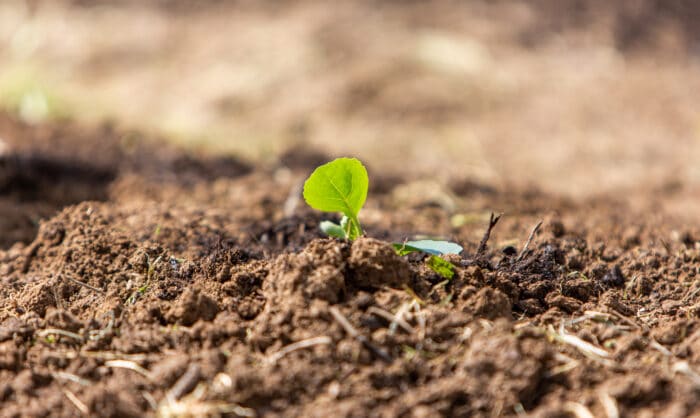
That said, vegetables do need sun (and lots of it) to grow. Ideally, they need to be in a location that will enable them to lap up anywhere between six and eight hours of direct daylight. Whether it gets this in the morning or afternoon, or through a mixture isn’t nearly as important as simply being able to soak it all up.
As well as this, a slightly elevated position allows for necessary drainage. Vegetables and waterlogged soil go together like Superman and Captain America. They don’t. No amount of forcing them together will bring good results or put them in the same universe. Putting a vegetable garden at the bottom of an incline or in an indentation in the ground will mean your veggies will have a hard time drying out – and they’ll suffer or die as a result.
Another thing to consider when you are going to eat what you grow is what’s going into the soil. So, if your garden has been exposed to chemicals, paints, oils, heavy pollution, or anything that may penetrate the soil and be absorbed by the plants, be cautious.
1.1 Growing Vegetables in a city
Even urban gardeners can turn small spaces into productive veggie patches. All you need are a few containers, a windowsill, balcony, patio, deck, or roof, and those six or more hours of sunshine.
Vegetables take very well to being grown in containers. Versatile crops like tomatoes, beans, peppers, and lettuce can be very happy in them in fact. It’s also an excellent way to get started in vegetable growing, as you have complete control over watering, space and even if you want to move your veggies around for optimal sunbathing. If you have adequate drainage, you should be able to grow veggies in your urban garden. Even potatoes and vine crops like cucumbers can be grown in the right container.
Smaller containers are perfect for crops with shallow roots like lettuce, radishes, and carrots. You’ll need larger and deeper containers for more demanding edibles, like tomatoes, potatoes, and beans. But don’t think you’re limited to just floor space and containers. Herbs and micro-shoots are very on trend now and are perfect for hanging baskets. But you can also use hanging baskets to grow cherry and dwarf tomatoes, cherries and grapes, chillies, and even lettuce and strawberries. Make the most of what you have – your veggie garden can be vertical too, with space saving shelves and trellises.
For optimal drainage and airflow, we’d advise raising containers between 2.5 and 5cm off the ground (1-2 inches) by using blocks or pallets. Your containers should also be placed in an area that gets plenty of sun and is ideally sheltered from wind. And remember to water regularly, as vegetables grown in containers are more at risk of drying out.
1.2 Balcony vegetable gardens
Balcony or rooftop gardening is a brilliant way for urbanites to start growing vegetables. Rooftop gardens in particular make the most of space that might not otherwise see use. Once established, these types of vegetable gardens are easy to care for too, needing only occasional watering and weeding. They might even help you save energy, as they can help provide more insulation and shade.
There are two main types of balcony or rooftop garden. The first uses containers, just as we detailed in the first section. This is perfect if your roof or balcony has a limited weight capacity. They are also best suited for those on a limited budget and are easier to maintain. Remember, you don’t have to get too fancy to start your veggie growing journey. Why not recycle plastic containers (ice cream or butter tubs work well) – a bit of paint and a few holes poked in the bottom, and you’re good to go. With a little imagination, anything from Tupperware to wellington boots can be used to grow vegetables. Again, if load bearing is an issue for your roof or balcony, lightweight alternatives like these are great.
If you are planning to use your roof for growing vegetables, it is always advisable that you hire a licensed professional to check its structural capacity. You’ll need to know if it can support additional weight, and how much. If all looks good, you can maybe even consider transforming it into a green roof garden.
A green roof garden is the second main type and is a bit more of an undertaking. It uses layers to provide insulation, drainage, and a mosaic of different plants and vegetables. Although not impossible to create on your own, this is another time we’d recommend hiring a professional to make sure everything is fit for purpose. There are lots of variables to consider, such as guarding against leaks, drainage solutions, layers like filtering mats, and soil depth – which needs to be enough to anchor plants in place. But the right design often leads to a low maintenance garden of your dreams capable of producing veggies.
1.3 Creating a rooftop garden
As we mentioned in the previous section, being short of space doesn’t mean you can’t grow vegetables, even in the city. Rooftop gardens are becoming very popular, and creating one isn’t as difficult as you might think. But there are a few things you’ll need to check and confirm. First off, you’ll need to check the paperwork and legislation (see section 1.5). That means researching local ordinances, rental property rules, or homeowner association regulations regarding rooftop gardens. In some cases, due to structural reasons or permissions, rooftop gardens may not be possible – so it’s best to be in the know before committing yourself and your wallet to a project!
The second step is to work with an architect or contractor to ascertain how viable the project is. They don’t need to be involved in the nitty gritty of the actual building of the garden. But it’s absolutely vital that you get professional input in confirming that your intended space can take the weight – literally. There will be many factors that have to be considered, and the sign off from a pro will help you avoid any pitfalls, or falls of a more literal kind!
Thirdly, even if your intended space is structurally sound and can take every spadeful of soil you intend to lug at it, a focus on reducing weight should still be at the core of the design. In order to reduce weight, use fibreglass, plastic or foam containers. This is probably the only time you’ll find us not recommending pavers, but there is still a wide choice of lighter aggregates to think about and which we’d be happy to advise on. And as lifehacks go, did you know you can use Styrofoam peanuts for drainage, and that there’s such a thing as lightweight potting soil?!
The other thing you will have to consider when building your rooftop garden, is that it will be much more exposed to stronger winds than a normal garden. And the higher you are, the worse it will be. So, windbreaks are going to be important when it comes to protecting your crops. By using trellises or some kind of lattice pattern, you’ll be able to disrupt the flow of the wind – which is actually more effective than trying to stop it completely! Solid windbreaks can act as sails and are likely to be knocked down or blown away completely. Eliminating wind flow won’t be favourable for your plants – you just want to decrease it and counter the effects of having a garden at height.
The last factor you need to build into your rooftop garden is water. Heaving buckets of water up to a rooftop garden is less than ideal, and your plants will need plenty of the wet stuff in hot weather. Water storage – preferably by collecting rainwater in a butt or barrel, is your best option. Alternatively, the more costly option of an automatic watering system will give you piece of mind and make things a lot easier.
1.4 Vegetable gardening in the greenhouse
A greenhouse can provide your veggies with an ideal growing environment, often yielding crops that mature faster and stronger than those relegated to plots outside. And the good news is that greenhouses come in all shapes and sizes. From no bigger than a bedside cabinet to full industrial warehouse, there’s an ideal greenhouse for any space and budget.
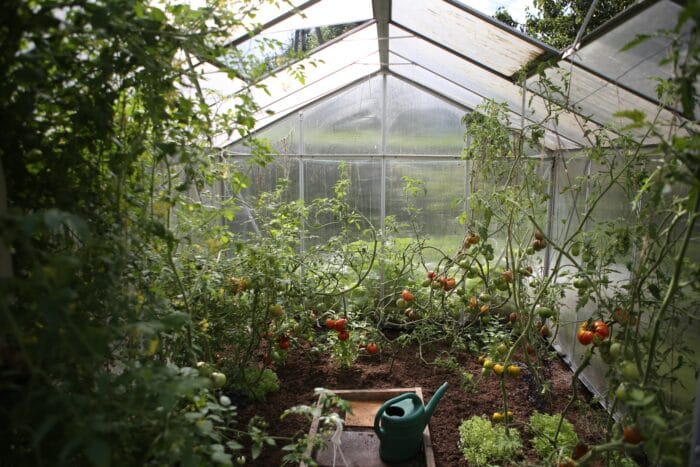
A greenhouse also enables you to be more productive by growing more of the time. You can often extend a season by months, or kickstart them a little earlier. And whilst you can’t grow vegetables year-round even in a greenhouse, a simple heating system will enable you to grow cool-weather veggies in the worst of winter weather.
You can grow vegetables directly in the soil inside the protected walls of a greenhouse, but again, containers will give you more control and often better results. This is another place where using shelves, trellises and hanging planters will boost your growing space (and potential) no end.
If you are planning on using a greenhouse for winter vegetable growing, you can add a solar collector – such as a wall of black-painted plastic containers. This will store solar heat as it builds up during the day and radiate throughout the greenhouse overnight. This will help prevent freezing. For the coldest nights of the year, a small heater also won’t go amiss!
1.5 Gardening laws and ordnances
You’ve been inspired to create the garden of your dreams, and you’re getting excited about making it a reality. But one of the things that can turn that dream into a nightmare is falling foul of regulations and local restrictions.
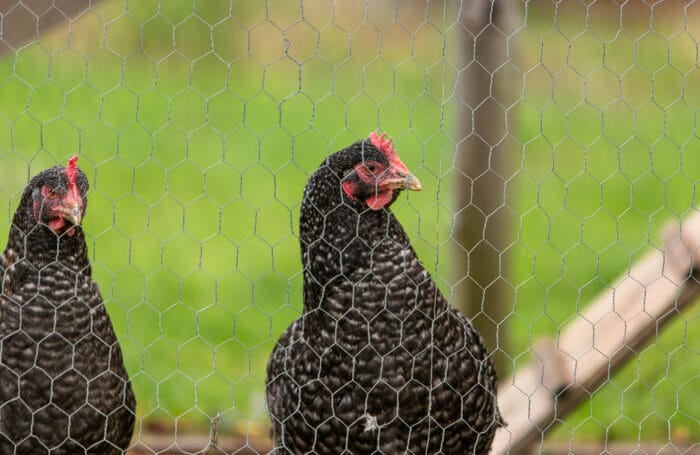
One of the most significant of these are the ordnances governing fences and hedges. There are often restrictions on how high a fence can be, or in the case of front gardens and outdoor spaces – whether you can have a fence or hedge at all. In the case of a vegetable garden, this may include raised beds, terraces and decking installed for containers.
Another aspect to consider – although not technically one that should impact vegetable gardens, is grass length. For instance, it has become very popular to leave grass areas to become wildflower meadows or patches. And whilst this is fantastic for wildlife, many local councils enforce restrictions on grass length. There have also been a significant number of legal cases raised based on unkempt looks and maintenance. What may be one person’s haven could well be a neighbour’s eyesore. However, in most cases, these kinds of issues are restricted to front areas or those that border roads and pavements.
A restriction that many a UK gardener will be familiar with will be the good old hosepipe ban. This is where a little bit of planning – such as having some kind of water storage will really pay off. Vegetable gardens need plenty of water, especially in hot weather, so make sure you’re not caught short.
Even composting is unlikely to escape legal scrutiny. Although hugely beneficial, especially to vegetable gardens, aspects of a compost heap’s maintenance may be governed by local guidelines. And should invasive plants or weeds make their way into your garden and spread, you could find yourself in hot water.
And if you’re thinking of adding a few chickens or even potentially a goat to turn your vegetable garden into a smallholding, you could run into trouble. Everything from noise restrictions to outright bans on livestock (especially on allotments) could impact such plans. At the same time, whilst on the subject of animals, disturbing wildlife is often illegal and a big no-no. That means taking care not to damage or destroy bird nests during spring and summer. And if you’re lucky enough to have reptiles and amphibians in your garden, almost all are protected by law. Even the use of certain pesticides or traps for pests may be restricted. As always, if in doubt, check it out!
2. Building your vegetable garden
Before you get physical, spend some time planning the layout of your vegetable garden. This will ensure you have enough space for the vegetables you want to grow and will enable you to build in factors like water storage, materials, and even aspects like tool sheds.
One thing to consider is that your vegetable garden doesn’t need to look like an agricultural field or commercial farm. Your veggies don’t need to be laid out in neat rows and boring lines. And remember, the larger your plot, the more maintenance it’s going to need.
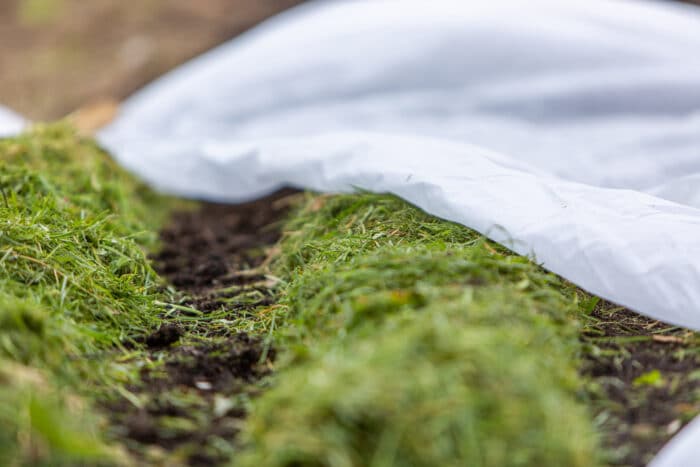
In our myth-busting section, we explore why it’s unlikely you’ll be able to live off what you grow 100% of the time. With that in mind, you’re much better off growing veggies for fun. Focus on the varieties that you want to eat or the unusual types that you can’t readily get in shops.
A smaller layout may well fit better into your lifestyle, your available space, and your budget. And your plants could benefit too – as they often do better when grown closer together, which provides the soil with shade and generates more moisture. It even acts as a deterrent to weed growth.
For best results, don’t make your growing beds any more than 3-4 feet deep. This will enable you to carry out weeding, watering, and other maintenance more easily as you manoeuvre around the beds. Make sure to include vital pathways in your planning, so you can access every part of your vegetable garden.
Generally, keep taller plants such as corn towards the back or middle of beds to create a cascading effect. And plant crops that produce early in such a way that you can easily replace them as they begin to fade out. You also can consider using raised beds, or even ditch beds altogether for a purely container focused vegetable garden.
2.1 Preparing the soil
Before you plant a single veggie into the ground, make sure your soil is optimised for perfect growing conditions. It’s well worth testing your soil, which will tell you the pH and type. Any deficiencies will need to be fixed with the right cocktail of nitrogen, phosphorous, or potassium to get the right balance, depending on if your soil is acidic or alkaline.
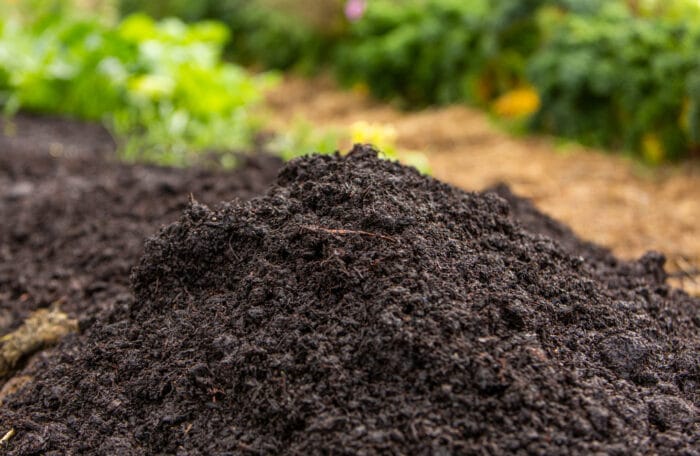
Clay-heavy soils will need to be kept free of compaction and boosted with organic material like compost. Sandy soils have a reduced ability to hold water and nutrients, making for difficult growing conditions. Well-rotted manure or compost is a great way of improving sandy soil. Alternatively, peat or vermiculite can help sandy soil retain more moisture.
If you’ve opted for a container-only vegetable garden, you could consider alternatives to soil completely. You can make your own soilless mix too. All you need is Sphagnum peat moss, perlite, vermiculite, and sand. You can either make your own, or head to your local garden centre for something pre-mixed for ease.
2.2 Building raised beds
Creating raised beds is easy when you know how – and luckily, we’ve covered it in our blog! Crack into the article to see how pallet collars make things simple. But this is an area where you can really use your imagination. And remember, if it can hold soil and maintain its shape, it’s suitable! From bathtubs to a chest of drawers, it can probably be made into a raised bed or container. All you need to do is make a few modifications for drainage and aeration. You can also build raised beds using brick, concrete, or containers. One word of caution though. If using timber, it’s important to make sure it hasn’t been pressure treated, as the chemicals can contaminate your soil.
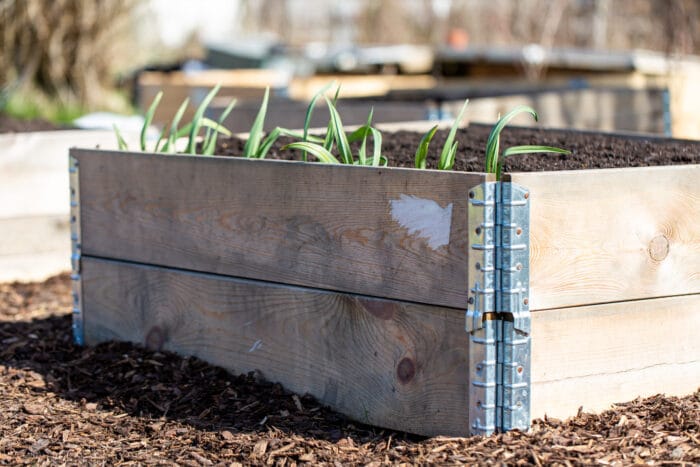
Elevated beds and raised garden boxes require less maintenance overall and make it easier to weed and water. Typically, raised beds are 3 feet or 1m wide, but their length can vary and be extended to accommodate your space or needs as you see fit. The only universal measurement to take note of is the depth. You’ll need to leave a minimum of 6-12 inches (15-30cm) for good roots to develop.
3. What to grow and when
Before you commit plants to the ground, you may want to avoid the frosts of early spring and late autumn and winter. But that still gives you plenty of time to enjoy growing your own vegetables and to benefit from multiple crops. The choice of different crops and their multitudes of varieties is vast, so we won’t cover tips on how to care for individual plants here. But spend some time with a good seed catalogue or join allotment and “grow your own” communities on Facebook to get some inspiration.
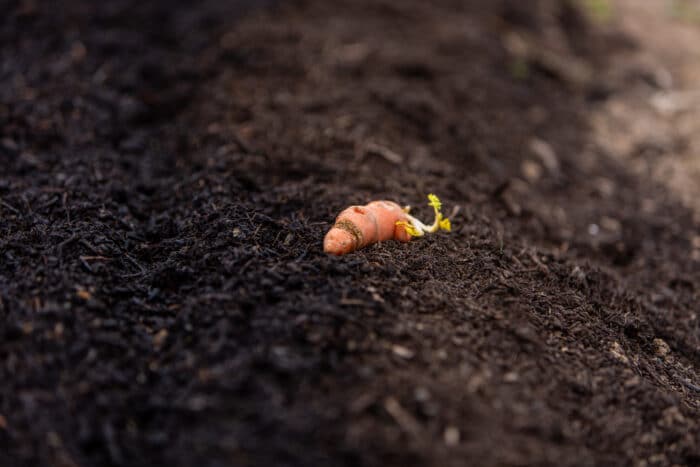
Most crops that require early planting are pretty hardy. They not only mature faster, but they can take the odd bit of bad weather in their stride. And as we mentioned in previous sections, once they’ve been harvested, they can make way for other crops. What a great way to optimise your veggie garden! Succession planting – its official name, will enable you to get more from your garden, more often! Examples of early crops that can be planted outdoors as early as January include peas and broad beans. By February, you can add carrots, parsnips, and radish to the mix.
Spring is when your veggie patch activity will step up a gear. At this time of year, you’ll still be planting relatively robust plants that can cope with intermittent weather but will also make the most of the sun when it arrives later in the season. Great crops for this time of year include globe artichokes, beetroot, Brussels sprouts, cabbage, kale, leeks, lettuce, rocket, and spinach.
By late spring, you’ll really be maximising your veggie space and seeing healthy plants everywhere (hopefully). This is the time of year to be sowing climbing beans, broccoli, cauliflower, chard, chicory, courgette, marrows, sweetcorn, and squashes, among many others!
The arrival of summer will herald your busiest period in your vegetable garden. As the long evenings hit, you’ll be harvesting asparagus, potatoes, Pak choi and tomatoes to mention just a few. But you’ll also still be sowing crops like pumpkin, spring onions and Chinese cabbage.
By late summer, your hard work is paying off and your activities will be firmly focussed on harvesting the veggies of your labours (fruits are more typical autumn crops!). With the arrival of late autumn and early winter, it’s a case of sowing some of your hardy early crops again and preparing to do it all again over the next year!
3.1 Tips for beginners
As this is a beginners guide to growing vegetables, we’re going to presume that you’re relatively new to harvesting at home. As we’ve already mentioned, there is such a vast choice of crops available that we’ll leave what you want to grow to you, but we have put together some tips and suggestions to get you started.
A plot of 16×20 feet (approximately 5×6 metres) is enough to give you plenty of space to grow numerous crops, especially if you follow our earlier tips for successive growing. This just means you’ll replace early maturing crops with those that are planted and harvested later in the year. But our first tip is to start small. You could kick things off with a single tomato plant in a container. Don’t feel pressured to feed the five thousand in your first season! Work out what’s right for you and the space you have. There are no fixed rules.
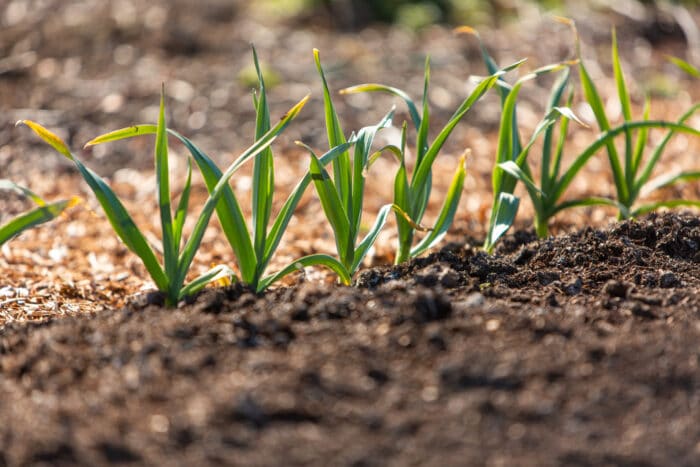
It’s also a good idea to draw your plans out on paper, noting what you want to grow. Some of the best crops for beginners include:
- Beans
- Beetroots
- Carrots
- Cucumbers
- Lettuces
- Radishes
- Squashes
- Tomatoes
You’ll need to find out more about the soil you have and factor in things like watering, drainage, and access to sunlight before you can really narrow things down. So, our next tip is to ensure you do your research. Hit the books, read up online, ask friends and neighbours, and talk to garden centres and experts about what’s right for your area and soil.
4. Myth busting
When you’re starting out into vegetable gardening, it can be easy to be overwhelmed by all the advice out there. The biggest myth about growing your own is that you’ll be self-sufficient, and that’s one we want to nip in the bud right away. You would need to grow veggies full time, almost all year round, and on several plots to grow enough to feed yourself without a trip to the shops every now and then. It’s not really a viable option for most gardeners, which is why we’d recommend sticking to the crops you really like, and varieties you can’t find in shops. That way, it always feels special and makes for a tasty treat!
The second myth we need to put to bed is that it will save you money. A glance down any seed catalogue worth its salt will show you this is unlikely to be the case. Factor in your working hours, labour, materials, maintenance, and upkeep, and you’re unlikely to give the local supermarket competition on value any time soon. That’s why it’s important to enjoy veggie gardening and to look at it as a great way to enjoy being outside. And your harvests will taste fresher, have fewer food miles, and will be packed with flavour.
We’ve already covered some other myths. Veggies don’t need constant sun – just six hours a day will suffice in most cases. And many enjoy a little afternoon shade to help avoid sun scalding.
An interesting one is whether to add sugar to soil for tomato plants to gain sweeter fruit. But whilst it’s true that tomatoes do have more sugar, it’s not created by adding sugar to the soil. That’s all done by the sun and photosynthesis. Any sugar you add to the soil will likely be washed away or consumed by insects
As we covered in our section on how to improve soil, only ever add organic matter to balance things out. Another popular myth about treating clay soil is to add sand for better drainage. But instead of making better soil, by adding water, what you actually have is the perfect recipe for making bricks!
This myth busting section is the final part of our beginners guide to growing vegetables. We hope it has provided you with plenty of advice and inspiration to get started with growing your own! Both ourselves and our neighbours at Capel Cottage Garden Nursery are on hand to help with any queries on building and stocking your dream veggie garden.
5. Resources
Yahoo Life https://uk.style.yahoo.com/garden-compost-seeds-shopping-coronavirus-144450394.html
Hartley Botanic https://hartley-botanic.co.uk/magazine/author/jean-vernon/
Horticultural Trade Association https://hta.org.uk/industry-data/garden-statistics.html
Gardener’s World https://www.gardenersworld.com/plants/vegetable-crops-for-beginners/

